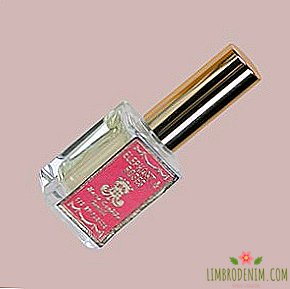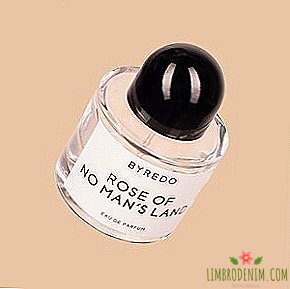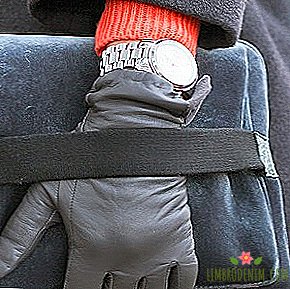From Bratislava to Gdansk: How I traveled in Eastern Europe
I will say right away: I really love to travel, but I never have money for a comfortable rest. Therefore, when in the middle of July my young man found almost free low-cost airline tickets to Bratislava for October, I said: “Uh, you! And where is it? But what difference does it make, let's go!”. This was the beginning of our preparation for traveling to unknown places. Bratislava is bordered by Austria and Hungary, so we had a choice: to go further on the route Austria-Germany or to Hungary and Poland. After much deliberation, we bowed down to the second option, since the budget was very limited, and we were not sure until the last moment that the trip would take place. Vienna seemed to us too pretentious and expensive, and palaces and theaters we never particularly liked.

As a result, we stopped on the route St. Petersburg - Moscow - Bratislava - Budapest - Krakow - Warsaw - Gdansk - Kaliningrad - St. Petersburg - I even had to write everything down on a piece of paper. We chose this path so that the distance between the cities was small. So, bus travels were short - we would not get too tired of them and be able to see more cities. Many acquaintances did not share our enthusiasm and raised their eyebrows every now and then: “Eastern Europe is a scoop, a criminal situation and devastation!”. But this only fueled our expectation of the trip, because we longed for adventure with all our hearts.
Then the most pleasant thing remains: to book accommodation and tickets. Contrary to the opinion that evolved thanks to the film “Eurotour”, you can open a restaurant for a dollar in Bratislava, housing is quite expensive compared to other cities on our list. Besides, having rummaged on Airbnb, I found out that there is simply no decent apartment in the capital of Slovakia, and as a result we chose a hostel. The rest of the accommodation was easily found on Airbnb, and thanks to the discount coupons offered by the site, we were able to save a lot on the apartments. For example, four nights in Budapest cost us only 50 euros, while for the other reservations there was a discount of 11 euros for each of the area codes.
Finally, on September 28, we left Moscow for Bratislava. The departure was quite comfortable compared to other European low-cost airlines: it was not necessary to register in advance and print boarding passes. In addition, the "Victory" allows you to carry ten kilograms of luggage for free, which was good for us, because we are great shoppers. Plus, they took with them a half-empty suitcase to put our purchases there on the way back.
Arriving in sunny and hot Bratislava, we immediately went to the hostel and walk. We had little time here - only a day - but this was enough to go around the night city, see the main sights and drink local beer. Bratislava left a very good impression: a well-kept and green capital with friendly people, public transport, which runs to the minute, inexpensive places. The next day, I accidentally met my old acquaintance near the Castle of Bratislava. After sitting with him in a cafe on the track, we went to the station to go from there to Budapest - the main city of our trip.
Arriving at the station, we realized that the real adventures are just beginning: our bus was late for an hour, we risked not having time to meet with the owner of the apartment. We got to Budapest at 7:30 local time, and we had only an hour to change the euro for Hungarian forints, buy SIM cards, figure out how to get to the place of residence, and, in fact, for the road itself. First of all, we went to the bus station to find an exchanger or ATM. Here the first disappointment awaited us: the taxi driver tried to deceive us, who said that everything was already closed and offered us to buy currency from him at an extremely unprofitable rate. Going down to the floor below, we found a cashier and an ATM there.
Having received the money, we were faced with disappointment number two: at the bus station in Budapest, absolutely nothing sold except rolls, so we were left without SIM cards and the Internet and could not see the route to our temporary home. We had nothing to do but to use the services of a taxi. But here we were unlucky: when we arrived at their parking lot, we met that same fartschik, and he announced to us a price of twenty-five euros for a trip of three kilometers. But there was already nothing to do, so we got into another car and for the predatory twenty euros we reached the destination.
Having settled in an old house with a yard-well, as in our native Petersburg, we still decided to go in search of SIM cards, since the Wi-Fi in the apartment did not work. At the exit from the house, we were hit by the last, fourth blow: my friend broke the phone tightly. Frustrated by the large number of failures in the last couple of hours, we returned home and went to bed.
In the morning my birthday came - we decided to celebrate his trip to one of the famous thermal baths. They chose the largest in the city - the "Section". This is a huge complex, which consists of indoor and outdoor pools with different water temperatures, several saunas, a gym. At the end of September it was +26 and it was possible to sunbathe on its territory. The entrance ticket costs about fifteen euros, for the rent of towels we paid about three more. After water and sun treatments, we went to a fair nearby to try local pastries: kyurtyoshkalak (a hollow bun with various sprinkles) and langos (a yeast dough cake with sour cream, cheese and onions).

Budapest is favored by poor tourists: many sights can be viewed for free or for little money. It's nice when there is an open at any time of day platform for exploring the city from a height, with secluded places where you can admire the view alone. In Budapest, this is Gellert Mountain, located in Buda, the western part of the Hungarian capital. There are many sights on the slopes, and at its highest point stands the Statue of Liberty with a palm leaf in its hands, symbolizing the victory of the Hungarians over the communist regime forcibly imposed by the Soviet Union. From the viewing platforms at different levels, there is a great view of the majestic Danube, the bridges and the sights of Pest.
Budapest is perfect for lovers of nightlife: Hungarians love bar-hopping, there are a lot of decent places for every taste and budget in the city. They are mainly concentrated in the Jewish quarter of Erzhebetvaros. There are also the so-called ruin bars - for example, one of the oldest "Szimpla", where we went. Such institutions are located in abandoned buildings with shabby walls, without doors and with broken furniture. Prices are appropriately low - for two drinks, we gave about three euros, so walking around the bars here will not be as expensive as in Moscow or St. Petersburg.
Of course, like typical tourists, we did not refuse to go to the museum, but we chose not the most common - the Ludwig Museum, which specializes in contemporary art. This is the East European branch of the museum in Cologne, in which we were a year before. Two expositions were presented: "History of Wroclaw avant-garde artists" and "Young artists of Poland". I was especially impressed by the first one, which tells about the art of the Polish city of Wroclaw in the 1960-1990s.
Budapest left behind a familiar aftertaste: the same bridges, the same broad river, the courtyards, the majestic architecture, the little things that you can pay attention to forever, and parties - this city lives actively. However, you should be prepared for a large number of homeless people - they can be very annoying, demand attention and money. Locals for the most part are friendly to them.
Then we moved on buses PolskiBus. If you buy tickets on the day of the start of sales (they open in two and a half months), then you can grab them for only 1 zloty (17 rubles). We managed to buy a flight from Krakow to Warsaw for the same price, for the rest we paid 5-10 zł.
After Budapest, we ended up in Krakow, and then in Warsaw and Gdansk. All of them are similar: the same old center with all the attributes due to it, like cobbled streets, squares, "toy" houses. Many cities in Eastern Europe suffered during the war, and Warsaw and Gdansk were practically worn down and rebuilt, so the old city is more historical scenery than architectural monuments.
In Krakow, we particularly studied the Jewish quarter, the territory of the former ghetto, and went to the Schindler's Factory Museum. The building is built on the principle of a spiral: visitors walk along dark nooks from installation to installation. First, they see pictures of happy people before the war, then the occupation - the arrest of professors at the Jagiellonian University, the shooting of civilians, the creation and then the elimination of the ghetto, the horrors of the concentration camp, the exposition about the personality of Mr. Schindler and the lists of people he saved. The exhibition closes the huge portrait of Stalin, symbolizing the liberation of Russian troops. The effect of complete immersion is achieved by realistic sound: crying, screams, shots, the sound of glass breaking, claps are heard. The museum is interactive - you can walk where you want, touch everything with your hands, twist, pull. At first we had the idea to visit one of the concentration camps - Auschwitz near Krakow or Majdanek near Warsaw. But the impressions at the end terribly exhausted us, and after visiting the "Schindler Factory" we were so shocked that we decided to postpone such a difficult journey until the next time.
Warsaw was the most inhospitable of all the cities we visited during this time. It is very similar to Berlin: there are few attractions, many gray, faceless buildings in the spirit of the Orwellian Ministry of Truth. In addition, the owner of the apartment deceived us and instead of a cozy attic she gave us a small family in the attic with a broken shower and no kitchen. Moreover, on the second day, our room was opened by a code lock by some Polish teenagers who convinced us that it was they who rented it. At first it was very scary, but then we realized that there was nothing to fear. With cries of "This is Warsaw!" they apologized and left, and we thought to ourselves that we need to rent a house for which there are already reviews.

Truly in this city, I was bribed by a unique symbiosis of urban species and wildlife. There is a large Лазazienki park with peacocks and deer, which miraculously survived during the war. There is also a huge garden on the roof of the university library - a real bioindustrial paradise in the realm of glass and metal, where students and ordinary citizens relax. Five minutes walk from the library there is the Copernicus Science Center. We stayed there for three hours and visited several exhibitions. We especially liked the "RE: Generation" section, where with the help of game tests and tasks in the field of psychology, sociology and neurobiology, you can learn everything about your inner self: your personal qualities, relationships with people, how to make its contribution to urban space, and so on. We left the museum happy as children, clutching a portrait painted by a robot on paper in our hand. Before going to the Science Center, you should look at his official website and choose your favorite expositions - this will help you see as much interesting as possible in a few short hours.
The next and last stop on our trip was the city of Gdansk and located near Gdynia. Here we slowly began to return to normal life: we again found ourselves on the Baltic Sea, walked along the empty beach and shipyards, drove gulls - everything was almost like in St. Petersburg. From +26 we got to +8 and for some reason were happy to return to our usual dullness and cold.
The great advantage of the trip was its relative cheapness and proximity to Russia. Poles are a friendly, open people, and a similar language makes communication comfortable even for those who know only Russian. In this country you feel at home and you are not afraid that you can remain misunderstood. In my opinion, behind beautiful architecture and parties it is worth going to Hungary, and behind history and modernity - to Poland.
As for the savings on the trip, the great help for us was that we cooked at home: I love to try local cheeses and fruits, I love to make simple foods from local products, like scrambled eggs and omelets with different fillings, pastes with different sauces, burgers. I have a whole list of fast and tasty dishes, the preparation of which takes no more time than going to a cafe, and the savings are substantial. The whole trip, including housing and transportation and excluding shopping, left us a thousand euros for two.
I want to say that intuition did not let me down - we were really fascinating and diverse route, and the constant patrols allowed me to feel like a bit of the heroes of Kerouac's "On the Road". We looked at all the cities and countries from the front and from the inside, saw luxury and simplicity, visited the hills and the sea (and even looked at Krakow from the distance on the Tatra Mountains), weary from the heat and shaking from the cold, spent time in palaces and squatting, hanging out on the outskirts and drank cocktails at the tables of fashionable cafes, felt history and modernity, asked questions and answered them.
Photo: Nightman1965 - stock.adobe.com, Renáta Sedmáková - stock.adobe.com, flashpics - stock.adobe.com, Marcin Chodorowski - stock.adobe.com





